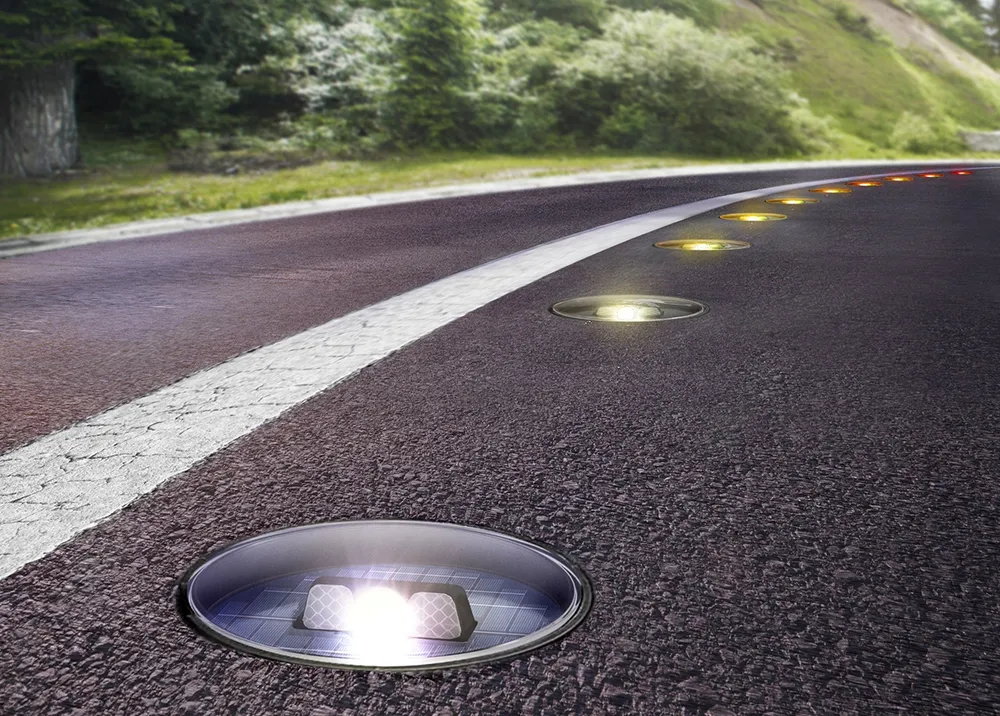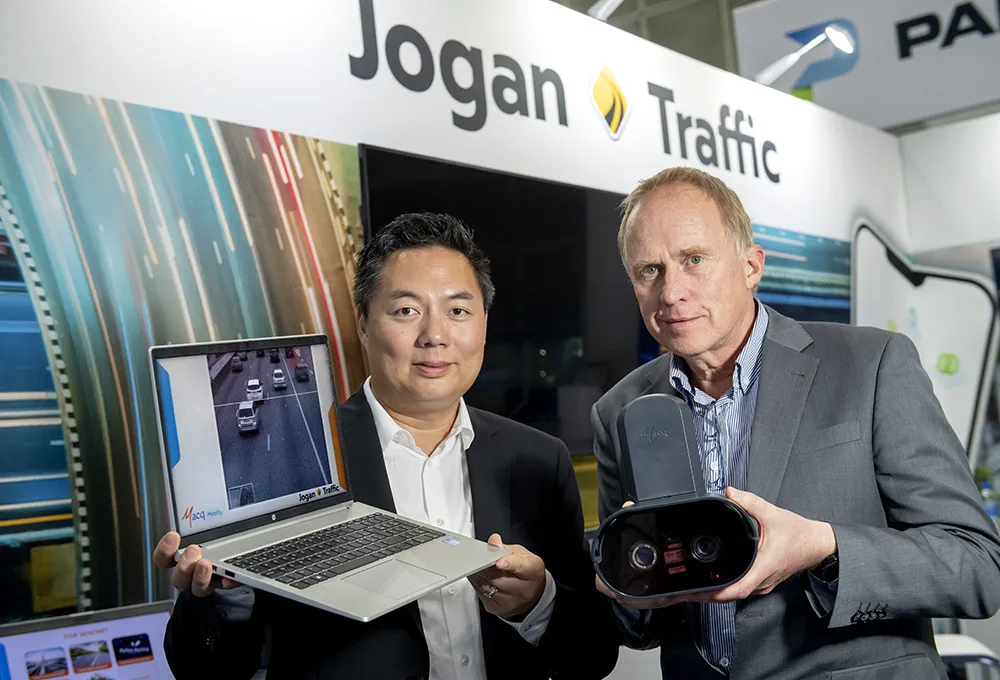It would be easy to fall into the trap of seeing machine vision as the vision-based solution for ITS and traffic, however Patrik Anderson, Director Business Development Transportation of Axis Communications, notes that many of the applications which are coming to be associated with machine vision – and, indeed, many of the characteristics, such as at-the-edge analytics and image processing – are also possible with open-standard networked video. Networked video brings a whole host of advantages, such as the
January 11, 2013
Read time: 4 mins

It would be easy to fall into the trap of seeing machine vision as the vision-based solution for ITS and traffic, however Patrik Anderson, Director Business Development Transportation of 2215 Axis Communications, notes that many of the applications which are coming to be associated with machine vision – and, indeed, many of the characteristics, such as at-the-edge analytics and image processing – are also possible with open-standard networked video.
“Networked video brings a whole host of advantages, such as the higher resolution images which HDTV-standard cameras can provide. That means being able to view more detail or observe a larger area for the same level of detail.
“I’d say that network video sits somewhere between CCTV and machine vision but its capabilities are improving all the time. We provide open camera platforms to thousands of technology partners who develop apps, such as for licence plate recognition, passenger counting or monitoring people flows in retail spaces. Those are getting more sophisticated and enable edge-of-network or more centralised processing to take place as desired.
“Machine vision very much has a role to play for high-end applications, such as monitoring motorway sections which are completely dark at night. But for applications such as the urban environment, where there is usually some form of lighting, network video works. It’s competitively priced – helped, for example, by companies such as Axis supplying environmentally rated systems in complete packages which are truly all-weather and feature Power over Ethernet. That makes them very readily deployable.”
At the6456 ITS World Congress in Vienna this year, Axis displayed its Wall Street Journal Technology Award-winning Lightfinder technology. Currently unique, this brings together in-house chip, software and lens developments to offer an outstanding ability to provide good-quality colour images even in very low light conditions.
“The alternative is to flood an area under observation with light, which is undesirable from both environmental and cost perspectives,” says Anderson. “Lightfinder is very readily applicable for licence plate recognition and automated incident detection. And, courtesy of our Axis Camera Application Platform, it’s ‘just’ another camera in the range which is readily integrated.”
Axis also offers solutions which feature a very high dynamic range, useful for settings such as tunnel portals, where cameras have to cope with very bright light and very deep shadow.
“There’s no standard for measuring dynamic range as yet – measurement, such as it is, tends to be in comparative testing. We tend to score well, however,” Anderson adds.
Dedicated ITS cameras combine surveillance and machine vision camera features, such as the capability when triggered to measure light levels and then adjust the gain and shutter settings on the fly. In many cases, the distinctions between ITS cameras and machine vision cameras are distinctly blurred as many of the latter now have such outdoor functionalities.
As a producer of cameras for both the ITS and the machine vision sectors78 JAI has a foot in both camps, says Tue Mørck, Director, Global Business Development.
“What’s important to the ITS customer regarding machine vision cameras is the ability to source from multiple suppliers, which is why JAI works to make all of its cameras standards-compliant. Camera Link has been important in the past but GigE Vision and USB 3 Vision, neither of which require a frame grabber, are becoming increasingly important. Another big need in the traffic sector is to be able to withstand extremes of temperature, shock and vibration whilst providing day and night capabilities.
“Applications such as ANPR for tolling or speed enforcement might be considered machine vision but many others such as general traffic monitoring or gathering statistics are more video analytics. The differentiation lies with the application knowledge within the camera system software; the hardware is becoming more and more similar. JAI’s ITS cameras are already able to handle experience-based non-trivial challenges like difficult and rapidly changing light conditions and to provide capabilities such as built-in triggering, for instance.
“I think we’ll actually see the two technologies areas begin to merge, as cameras for the surveillance market gain resolution and become capable of ANPR. That’s already happening; if you look at standard cameras from 10 years ago and compare capabilities you’ll see there have already been huge advances.
“Ultimately, when we talk about ‘machine vision’, we mean something which is automated. A decade ago, you had a choice between a standard surveillance camera solution which could just look and view, and machine vision. Now we have many things in between. Processing is becoming cheaper, which will allow surveillance and machine vision cameras to start to use generic applications. That’s going to cause things to diversify even further.”
“Networked video brings a whole host of advantages, such as the higher resolution images which HDTV-standard cameras can provide. That means being able to view more detail or observe a larger area for the same level of detail.
“I’d say that network video sits somewhere between CCTV and machine vision but its capabilities are improving all the time. We provide open camera platforms to thousands of technology partners who develop apps, such as for licence plate recognition, passenger counting or monitoring people flows in retail spaces. Those are getting more sophisticated and enable edge-of-network or more centralised processing to take place as desired.
“Machine vision very much has a role to play for high-end applications, such as monitoring motorway sections which are completely dark at night. But for applications such as the urban environment, where there is usually some form of lighting, network video works. It’s competitively priced – helped, for example, by companies such as Axis supplying environmentally rated systems in complete packages which are truly all-weather and feature Power over Ethernet. That makes them very readily deployable.”
At the
“The alternative is to flood an area under observation with light, which is undesirable from both environmental and cost perspectives,” says Anderson. “Lightfinder is very readily applicable for licence plate recognition and automated incident detection. And, courtesy of our Axis Camera Application Platform, it’s ‘just’ another camera in the range which is readily integrated.”
Axis also offers solutions which feature a very high dynamic range, useful for settings such as tunnel portals, where cameras have to cope with very bright light and very deep shadow.
“There’s no standard for measuring dynamic range as yet – measurement, such as it is, tends to be in comparative testing. We tend to score well, however,” Anderson adds.
Dedicated ITS cameras combine surveillance and machine vision camera features, such as the capability when triggered to measure light levels and then adjust the gain and shutter settings on the fly. In many cases, the distinctions between ITS cameras and machine vision cameras are distinctly blurred as many of the latter now have such outdoor functionalities.
As a producer of cameras for both the ITS and the machine vision sectors
“What’s important to the ITS customer regarding machine vision cameras is the ability to source from multiple suppliers, which is why JAI works to make all of its cameras standards-compliant. Camera Link has been important in the past but GigE Vision and USB 3 Vision, neither of which require a frame grabber, are becoming increasingly important. Another big need in the traffic sector is to be able to withstand extremes of temperature, shock and vibration whilst providing day and night capabilities.
“Applications such as ANPR for tolling or speed enforcement might be considered machine vision but many others such as general traffic monitoring or gathering statistics are more video analytics. The differentiation lies with the application knowledge within the camera system software; the hardware is becoming more and more similar. JAI’s ITS cameras are already able to handle experience-based non-trivial challenges like difficult and rapidly changing light conditions and to provide capabilities such as built-in triggering, for instance.
“I think we’ll actually see the two technologies areas begin to merge, as cameras for the surveillance market gain resolution and become capable of ANPR. That’s already happening; if you look at standard cameras from 10 years ago and compare capabilities you’ll see there have already been huge advances.
“Ultimately, when we talk about ‘machine vision’, we mean something which is automated. A decade ago, you had a choice between a standard surveillance camera solution which could just look and view, and machine vision. Now we have many things in between. Processing is becoming cheaper, which will allow surveillance and machine vision cameras to start to use generic applications. That’s going to cause things to diversify even further.”










